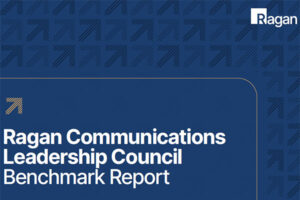How to optimize your intranet to keep employees coming back
We spoke with Shannon Iwaniuk of Alcon about why connectivity and connectedness are not the same things.

As an internal communicator, you may be familiar with the ins and outs of creating content for your company’s intranet platform. But no matter how vibrant your company culture is, garnering employee engagement for your intranet comes with its share of challenges an internal platform thrives on. While multiple factors can help drive employees to the intranet, it all starts with creating a positive user experience that continues to bring them back.
We spoke with Shannon Iwaniuk, director of internal communications at Alcon, about the steps organizations can take to make their intranet a host of top-flight content that employees consistently return to.
Connectivity is not connectedness
An intranet is a fantastic way to keep employees across the globe interconnected and build a sense of culture that transcends geographical boundaries. But you can’t just post blocks of staid text and expect to garner actual engagement. Creating a positive user experience on an intranet platform requires showing employees as real people with diverse roles, interests, and personalities. This is particularly important in a world of hybrid and remote work situations.
“Don’t confuse connectivity with connectedness,” Iwaniuk said. “Dynamic content that really shows the nature of an organization helps. Even if you don’t do lots of video content, pictures can still help highlight the most important part of an organization — the people working there.”
Iwaniuk explained that the specific images communicators share over the intranet can make a big impact and send a cultural signal to employees.
“Images that feature the organization’s leaders can help foster a sense of connectedness between top-level decision-makers and the rest of the organization,” she said.
An intranet that measures up
Building a great intranet that’ll resonate with the organization also takes a lot of looking outward from the department and taking stock of what’s going on in the world so the larger social and cultural fabric can inform the initiatives, achievements, and other content you choose.
“You’ve always got to take stock of what’s going on,” Iwaniuk said. “The world is constantly in motion and the content you’re vying for the organization’s attention with is always changing. That’s why frequent audits of your audience and measuring what sorts of content they’re seeking is a major pillar to creating an intranet that’s successful and enjoyable to use.”
Measurement for the sake of measurement isn’t going to help you generate the right type of content and thus is less likely to reach the target audience and improve the intranet experience.
“I’ve found over time that it’s less about measuring the number of stories or posts, but [instead] measuring for outcomes and behavior change,” said Iwaniuk. “Measurement is a process that takes place over time — you can’t just do it once and call it a day. You have to keep it up.”
She also said that measurement can also help communicators figure out what sort of content they need to use to drive people to the intranet in the first place.
“Measurement will help determine what habits will get eyes on the content and what works, along with what doesn’t. This can help communicators adjust to their given landscapes.”
Iteration and exclusivity are key
While intranets can vary widely from organization to organization based on size and resources available, they can serve as a catalyst for engagement with the right measurement and listening. Sometimes, it just takes a little bit of experimenting to get there.
“There are so many approaches you can take to making an intranet platform a hub for engagement,” Iwaniuk said. “Figuring those out takes due diligence and getting to know your audience.”
Iwaniuk also alluded to the fact that an intranet platform can serve as a repository for exclusive content that’s internal only, a tactic that can help drive traffic.
“Serving the audience exclusive content in different ways, such as through photo recaps or coverage of live company events can keep things fresh,” she said. “If you’re providing content that your audience wants, they’re much more likely to have a positive experience and more likely use the intranet going forward.”
Sean Devlin is an editor at Ragan Communications. In his spare time he enjoys Philly sports, a good pint and ’90s trivia night.







